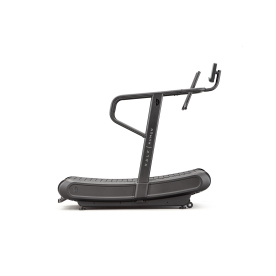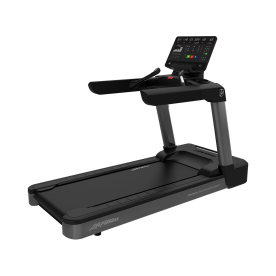-
 Half Human Curve TreadmillList Price £3,495.00 Our Price £2,999.00SAVE 14 %Finance from £249.92 per month
Half Human Curve TreadmillList Price £3,495.00 Our Price £2,999.00SAVE 14 %Finance from £249.92 per month -
 Sole TT8 (AC) Light Commercial Treadmill ENTList Price £3,999.00 Our Price £3,299.00SAVE 18 %Finance from £274.92 per month
Sole TT8 (AC) Light Commercial Treadmill ENTList Price £3,999.00 Our Price £3,299.00SAVE 18 %Finance from £274.92 per month -
 Life Fitness Club Series Plus Treadmill with SL ConsoleList Price £8,395.00 Our Price £7,445.00SAVE 11 %Finance from £620.41 per month
Life Fitness Club Series Plus Treadmill with SL ConsoleList Price £8,395.00 Our Price £7,445.00SAVE 11 %Finance from £620.41 per month
Non-Folding Treadmills
More stable than its folding counterparts, the non-folding treadmill is the more common option seen in commercial gyms worldwide. Stronger and sturdier, the non-folding treadmill usually boasts a large running deck for longer strides and higher weight capacity for larger exercisers.
COMMERCIAL NON-FOLDING TREADMILL BENEFITS
-
Portability
Many non-folding treadmills also come with wheels so make sure you check for these if you’re likely to be moving the machine from place to place. -
Improved Durability
Commercial Non-Folding Treadmills utilise high-grade materials and a larger moto than treadmills for the home, allowing them to withstand high-intensity usage every day.
-
Less impact on joints
Running on a treadmill reduces the impact on your joints, compared to running on pavements or road surfaces. To further reduce the impact, you may choose to purchase a machine with an orthopaedic belt. -
Increased calorie burn
Running is a weight bearing exercise, which means it burns more calories in comparison to rowing machines or exercise bikes.
WHAT TO CONSIDER
-
Measure your workout space
It’s imperative that the treadmill you buy fits comfortably into your allocated space. Measure the length, width and height of the available area and keep this handy when browsing treadmills. When measuring, make sure you allow extra space for mounting and dismounting. We recommend a 2ft clearance each side, 130mm at the front and at least 3ft at the back. Don’t forget that your treadmill will need to be located close to a power point. -
Running area
We recommend a 51cm/20” wide belt for runners. In terms of length, at least 140cm/55” is recommended for runners, while 127cm/50” will be sufficient for walkers. The longer and wider the belt, the more room for natural running fluctuation, wider strides and general comfort. -
Motor size
Motor size should be at least 1.5 continuous horsepower (CHP). We recommend 2.5 CHP+ if you will be running or jogging regularly on the treadmill. If you’re all for high intensity, you’ll definitely want to opt for a higher motor size (3.0 or above). Generally, a quieter motor indicates a more powerful machine. -
Speed and incline
We recommend a speed limit of at least 16km/h (10mph) for runners. We suggest adding a couple of km/h to your regular running speed. Incline (gradient) is a fantastic feature on treadmills as this is a simple way to add resistance, target different muscle groups and reduce impact on your joints. Most commercial treadmills offer a decent incline range. The wider range, the more intense a workout it offers. -
Weight capacity
Most commercial treadmills feature a larger weight capacity than those manufactured for the home, allowing exercisers of all fitness levels to benefit.



